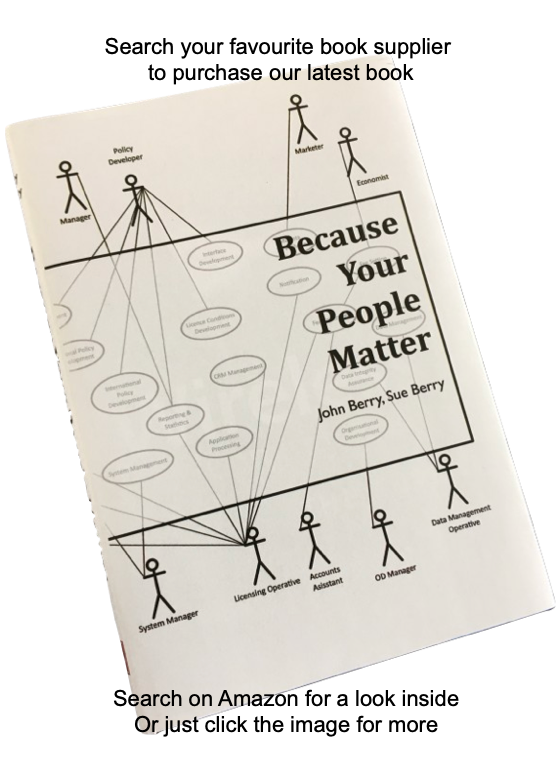What to do when hearing about possible harassment
What to do when hearing about possible harassment
Written by Sue Berry on 23rd November 2017. Revised 25th March 2020.
6 min read
 There has been a flurry of high profile cases with celebrities and MPs being accused of sexual harassment. Some alleged incidents date back many years.
There has been a flurry of high profile cases with celebrities and MPs being accused of sexual harassment. Some alleged incidents date back many years.
It’s not clear why these cases have suddenly been highlighted, but now that they have, they do need to be investigated.
In the workplace, the employer should deal with allegations of harassment in the first instance. Allegations of improper behaviour outside of work should be reported directly to the police. This article deals with alleged harassment in the workplace.
Defining harassment
The Equality Act 2010 defines harassment as unwanted conduct related to a relevant protected characteristic, which has the purpose or effect of violating another person’s dignity, or creating an intimidating, hostile, degrading, humiliating or offensive environment for that individual.
The protected characteristics are: age, disability, gender reassignment, race, religion or belief, sex and sexual orientation.
For harassment to be deemed to have taken place the alleged behaviour must have had either purpose or effect. There’s more on this below.
Dealing with allegations of harassment
Unfortunately those in a position of power do not always understand how to manage the delicate situation when someone is accused of bullying and harassment, particularly when the issue may be sexual harassment.
 It’s important to be sure that the person who is accused understands that allegations have been made. They should be given some clarity as to what the accusation relates – but since at that point there has been no investigation, there’s likely little that can be said.
It’s important to be sure that the person who is accused understands that allegations have been made. They should be given some clarity as to what the accusation relates – but since at that point there has been no investigation, there’s likely little that can be said.
Suspension is normal in any case where investigation would be hampered, if re-offence were likely or if day-to-day relationships would be too awkward if the accused were to remain at work. No-one should be suspended without good reason. The decision to suspend should be based on evidence that suggests that alleged events might have taken place. It’s the manager’s call to suspend. He or she alone must judge if there is a case to investigate.
Suspension is not a sanction. It is a tool available to managers to enable a fair and robust investigation. The person will be temporarily removed from their role and will not be allowed to access company premises. They will remain on full pay and all benefits.
Suspension must be used with care.
Of course, those who hear about the suspension immediately assume that the person is guilty. You’ve heard the adage ‘no smoke without fire’. Irrespective of the outcome following robust investigation, the reputation of the person will be tarnished. This will not be a problem if the person is found to have bullied or harassed others. It is a different matter if the evidence shows that the reported action did not take place.
The investigation should be conducted as quickly and as a sensitively as possible.
It is likely that several people will need to be interviewed, including the person accused of the harassment. The investigator should then develop a report, setting out all the evidence related to the case. Typically that report will distil the copious information in statements, emails and the like that form the evidence. Those considering the evidence later want only a succinct accurate summary.
Once produced, the report goes to the chair of the grievance or disciplinary meeting to consider the findings. It is not for the investigator to draw conclusion. That’s for the chair considering the allegations and associated uncovered evidence.
The chair will then make his or her decision based on ‘reasonable belief’. There is no need for ‘proof beyond reasonable doubt’ or ‘proof on balance of probabilities’.
Irrespective of the status of the person, firms should follow a sound process. They should suspend (on full pay) if appropriate, investigate, and then make a decision based on the facts uncovered.
But we must guard against subjecting those with allegations against them to ‘trial by general public’. This is unfair.
Misconduct and gross misconduct (including harassment of any kind) by employees is an internal management problem that is dealt with using internal management processes. Unacceptable behaviour should not be tolerated by anyone.
But if there is no case to answer or the evidence exonerates the accused, management must put in place action to re-build the good standing of the accused. It’s not enough to simply say ‘come back to your desk and carry on’.
Determining the investigation outcome
Behaviour has to have purpose or effect to be classed as harassment. The behaviour can be one-off or it can be meted out over a period. Having purpose means that the person deliberately took action knowing that it would be unacceptable to the person on the receiving end. That is harassment.
Alternatively the person can behave in a way that causes the recipient to feel uncomfortable; for example, hugging or touching someone inappropriately. Verbal insults or innuendo may also constitute harassment. The perpetrator may not realise that their behaviour is inappropriate, but if it has the effect of upsetting the recipient then it is likely to be considered harassment.
What to do to avoid harassment
To avoid harassment, ensure that everyone in the organisation understands how their behaviour may affect others. This may mean putting in place training to ensure everyone understands the potential consequences of typical harassment behaviour.
Ensure that managers are trained in how to deal with allegations of harassment. Of key importance is the need for coolness. Instantly suspending only to realise later, on receipt of new information, that this was the wrong reaction can be damaging. Check that policies and procedures are fit for purpose. It’s no use having a procedure that is impossible to run when it is needed.
Decide how, and who will investigate allegations. Where necessary, appoint an external consultant to conduct the investigation and develop a report for the disciplinary or grievance meeting to consider.
Act as soon as an allegation is made. Don’t wait for the person to formally put their compliant in writing. Be sensitive and help the person to explain their allegations, if necessary drafting a statement on their behalf. But also beware of false or malicious allegations. Consider what you hear carefully and ask questions to satisfy yourself that there’s a case to answer.
Dealing with harassment complaints, and specifically sexual harassment, is not easy. Sweeping it under the carpet, whilst appealing as it might be, is not really an option.
Harassment is never acceptable. Call us if you need help with sensitive investigations in your organisation.